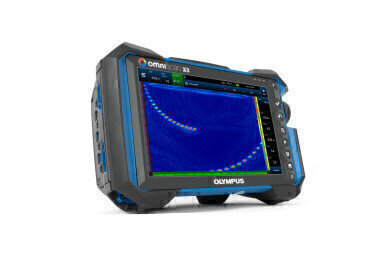Analytical Instrumentation
Selecting the Best Propagation Mode for a Reflector Using the AIM Modeling Tool for TFM (Total Focusing Method) Inspection
Sep 15 2020
Introduction of the Total Focusing Method into NDT
The total focusing method (TFM) has generated a lot of excitement in the nondestructive testing (NDT) field. But there are challenges that had yet to be resolved when using TFM, such as choosing the right mode of propagation (wave set) for a given inspection. Some early adopters of this method quickly realised that using the wrong mode could mean losing an indication from the screen entirely, which came with obvious critical repercussions.
Challenges of Choosing the Proper Settings Using TFM
When selecting a mode of propagation (wave set) for a given inspection, the inspector needs to know what kind of defects may occur in the part to be inspected. The type of defect will give some information on the orientation of the reflector, which is critical when inspecting with ultrasonic testing (UT). With conventional UT, phased array UT, or TFM, the basic principle remains the same. The probability of detection (POD) is highest when the transmitted acoustic beam’s angle of incidence is equal to the angle of reflection on the target reflector. Another consideration is the probe parameters. Depending on the probe used, the acoustic waves may not be capable of reaching the targeted defect with appreciable amplitude. Even though the TFM zone is drawn at a particular location, it is possible that the physics will not allow for this specific probe to focus that far into the part. There are so many factors to keep in mind, so how can we simplify and ensure that our inspection is adequate?
Solution Using the Acoustic Influence Map Modeling Tool
The OmniScan® X3 phased array flaw detector comes with a built-in scan plan tool. Within it is an Acoustic Influence Map (AIM) modeling tool that was specifically designed for TFM inspection. The AIM tool helps users select the right mode of propagation, or wave set, for their inspection.
The AIM modeling tool considers multiple parameters, including the probe and wedge, velocity, thickness, geometry of the specimen, inspection technique, wave sets, and, of course, the parameters entered by the inspector in the “Influence zone” menu to describe the targeted type of defect.
A flaw’s orientation is the principal factor impacting how well a sound beam will be able to detect it. The AIM model clearly demonstrates for the user how good the signal coverage is at a particular angle for a given flaw.
If you are interested in this topic read the whole article here.
Digital Edition
PIN 25.2 Apr/May
April 2024
In this Edition Safety - Carbon monoxide toxic and flammable gas detection Analytical Instrumentation - Density: A fundamental parameter at critical stages within the petroleum sector...
View all digital editions
Events
May 05 2024 Seville, Spain
May 06 2024 Riyadh, Saudi Arabia
May 06 2024 Houston, Tx, USA
May 06 2024 Houston, Tx, USA
Canada Gas & LNG Exhibition & Conference
May 07 2024 Vancouver, BC, Canada




















